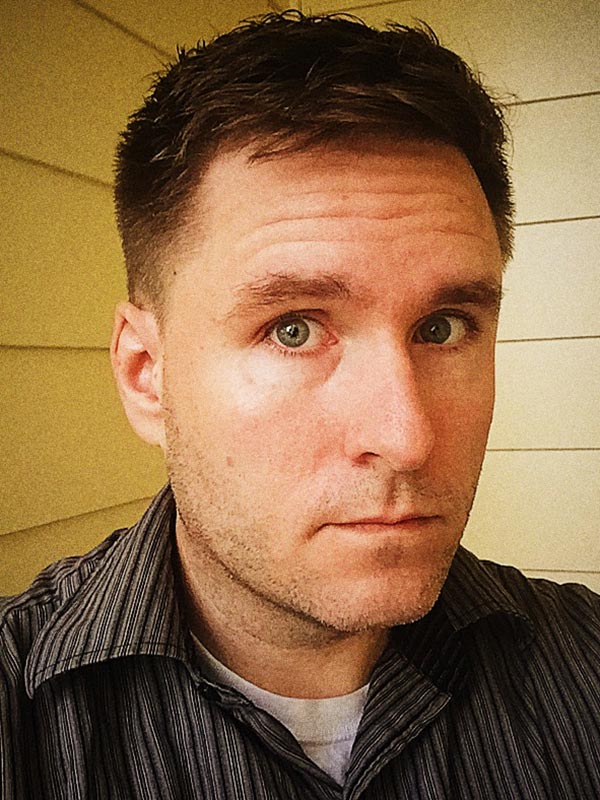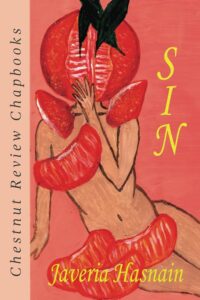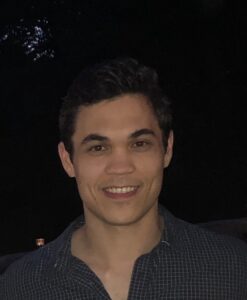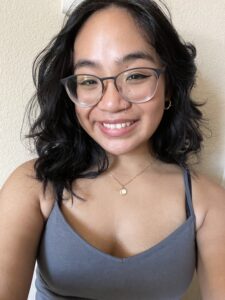The Art of the Aural Narrative: Podcasts to Inspire Your Writing
by Rob McGinley Myers
August 19, 2015
Novelists used to draw inspiration from newspapers. Gustave Flaubert got the idea for his first novel from a newspaper article about a woman who poisoned her family; Jules Verne said the idea for Around the World in 80 Days came from a newspaper. But these days, newspapers (like many forms of media) are dying. There is, however, one medium of non-fiction narrative that’s on the rise — a place where writers might find new inspiration. That medium is podcasting.
Except, I don’t really mean podcasting in general. Podcasting, like television, is just a method of delivery, and podcasting encompasses a broad swath of mostly terrible things to listen to: rambling, unedited, uninteresting conversations about whatever. These are not the kinds of podcasts I’m talking about. I’m talking about the highly crafted, narrative-style podcasts, podcasts that elevate documentary journalism to art.
What sets these podcasts apart is how they offer an intimacy with their subjects unmatched by any other medium. Print can’t convey the full texture of emotion in the human voice, and film often shines too bright a light to get into the private moments of our lives. Audio bridges the divide, capturing reality without distorting it too much, and remaining sharable in its original, organic form. And the very best of these podcasts not only offer dramatic, intimate narratives, but also new ideas on how to approach the construction of those narratives. Writers should take note.
What follows is a list of some of the podcasts that, as a podcaster and a writer, I have found especially inspiring.
Investigations
Serial
The podcast that really put narrative podcasts on the map this past year was Serial, the show from This American Life producers that reinvestigated the 1999 murder of a high school girl in Baltimore, Maryland. Serial caught on in part because of its titular serialized format, ending each episode with a cliffhanger about whether Adnan Syed, the man convicted of the murder, was actually guilty of the crime.
But the genius of the show was that it didn’t just tell its story in a linear fashion. Instead, it kept coming back at the same material from different angles, telling the story first in a way sympathetic to Adnan Syed, and then turning around and telling the story from the least sympathetic angle. The show was a great example of how a mystery story doesn’t need to start with a mystery and end with a solution. Instead, you can place the mystery at the center of the story, like a black hole, around which the galaxy of characters, events, details, and even different solutions revolve. If you somehow missed the bandwagon on Serial, start at the beginning with The Alibi.
Mystery Show
The other investigative show that’s gotten a lot of press recently is Mystery Show, by former This American Life producer Starlee Kine. If Serial were a hearty meal, Mystery Show is more like a frothy dessert. Kine takes tiny mysteries (so far, all of them contributed by her witty, radio-genic friends) and tries to solve them herself. Each episode plays like a Nancy Drew story directed by Wes Anderson. I’m a huge fan of Kine’s work, but early on, I felt like the mysteries she was solving on this show (Why Brittany Spears was carrying a certain book? How tall is Jake Gyllenhaal?) lacked substance. Kine is a charming narrator, but I wanted stories about things that mattered more.
The latest episode, delving into the mystery of a Welcome Back Kotter lunchbox and the life of the painter who painted it, finally won me over, and it’s a perfect demonstration of Kine’s method. Instead of focusing relentlessly on the solutions of her mysteries, she lets the investigation expose all the messy, endlessly fascinating threads (specifically the people she meets along the way) around that solution. As with Serial, it’s a reminder that, in the right storyteller’s hands, the process of trying to solve a mystery can be more interesting than the mystery itself.
Personal Documentaries
Startup
Another popular podcast this year was Startup, a show that told the story, week by week, of starting a company, specifically a podcast company. What made the show fascinating was how host Alex Blumberg (also a former This American Life producer) dramatized his own doubts and struggles (and hilarious late night conversations with his wife) along the journey to create his company. Unfortunately for the story, he succeeded pretty quickly, so the drama receded, and in the second season of the show, the subject switched to a different company. That second season was good, but its quality investigative journalism couldn’t match the first season’s self-interrogating high wire act. I recommend you start with the first episode of that first season, How Not to Pitch a Billionaire.
Additional Listening
What I like about the personal documentary genre style is how it upends the traditional personal essay. Instead of a narrator merely relating his or her memories of a story, the narrator has to do some actual footwork, ask questions, find evidence, document what really happened (or is currently happening).
One of the most recent examples of this genre is Millennial, the story of a young woman struggling to find a job after college. Host Meghan Tan is especially good at capturing dramatic scenes from her actual life, including tearful fights with her boyfriend, but my favorite episode was Brunchies, when she turned her microphone outward to capture the stories of other people her age dealing with the same struggles.
First Day Back is the story of a documentary filmmaker struggling to get back to her career after six years of maternity leave. Instead of merely dramatizing her own struggle, host Tally Abecassis broadens the theme of the show, interviewing family, friends, and other artists to explore the universal tension between creativity, career, and family life. Start with the first episode, Getting Back Out There, but stay for the most recent one, which features stories from her listeners.
Finally, How to Be a Girl is the story of a mother struggling with parenthood after her three year old son informs her that he is actually a girl. By turns hilarious and heartbreaking, each episode mixes stories, interviews and reflections on everything from gender to parenting to the very nature of identity. Start at the beginning with Mama, I’m a Girl.
Monologues
What playwrights call monologues, radio people call “non-narrated” stories. This is a misnomer, because these stories are narrated. The distinction is that they’re narrated by the subject of the story rather than the producer making the story. But what makes them a unique audio art form is the combination of conversational storytelling — the unique sound of the spoken word — and the the editor’s hand in sculpting that spoken narrative into its ideal shape.
Radio Diaries
One of the original masters of this form is Joe Richman of Radio Diaries, who’s been making all kinds of audio documentaries, most of them historical, using interviews and archival tape, for decades. Almost 20 years ago, he made a series of stories for NPR where he gave teenagers recorders and asked them to document their lives. The resulting stories are some of the most incredible audio portraits ever made. Since the start of the Radio Diaries podcast, Richman and his producers have gone back and produced updated versions of each of these diaries. They are not to be missed. My favorites are Josh: 16 Years Later and Melissa: 16 Years Later.
Additional Listening
Other shows that feature “non-narrated” stories include ARRVLS, which explores the “impact of unexpected events in the lives of everyday men and women.” ARRVLS has told stories about plane crashes, boarding school and the perils of being gay in Cameroon. A recent standout episode is In the Left Pocket by My Heart, the story of a woman living in the wake of the death of her newborn daughter.
For more non-narrated podcasts, check out Everything Is Stories, which features “tales from the underground, the underdog, and the outlaw,” and This Is Actually Happening, which tells stories about “what happens when everything changes.”
Stories on a Theme
Most people who make narrative-driven audio stories cite This American Life as their first influence, and This American Life’s format has always been to choose a new theme each week and tell a bunch of different kinds of stories on that theme. So it’s probably no surprise that a lot of podcasters influenced by TAL are making podcasts with themes. Except, instead of changing the theme week to week, these shows have settled on just one theme, and they’re bringing new stories every week on that same theme. You could imagine this approach becoming repetitive, but it turns out that mining a single theme can unearth some real depth.
One of the recent breakout hits in this vein is Nocturne, which features stories about the night, a topic that turns out to be fertile ground both for stories and for sonic details. Host Vanessa Lowe knows how to tell a story that lights up the dark corners of your mind, but the show’s secret weapon is its sound design. Step outside on a hot summer night and all your senses wake up. This show sounds like that. Episodes have featured truck drivers, bakers, mockingbird haters, and the host herself, trying to go for a hike in the woods even though she’s terrified of the dark. Another recent standout episode is The Vanishing Dark, about why it matters that most humans see so many fewer stars in our sky than we used to.
The theme of The Heart is stories about sex and love, and the show approaches that theme with a frankness and raw intimacy rare even in this new world of FCC-free podcasting. Host Kaitlin Prest has talked about her desire to create a sex-positive podcast that isn’t a panel discussion about sex and love, but an immersive sound experience of sex and love. One standout episode is The Hurricane, the story of a one-night stand that took place during Hurricane Sandy and why it didn’t last.
Neighbors is a more loosely defined podcast about the idea of getting to know the strangers around you, hosted by Jakob Lewis in Nashville, Tennessee. For me, the underlying theme of the show is human connection, whether that connection comes through a tea ceremony, a board game, music, or a funeral in which a family cleans, prepares, and buries the body of their beloved son themselves. A recent standout episode explored the connection, through the culture of food, between highbrow and lowbrow taste.
Reply All is a show about the internet, which covers all kinds of internet phenomenon, from the impact of the Yik Yak gossip app to the obsessive editors of Wikipedia. My favorite episodes are those about people whose lives have been impacted by the internet, like the first woman to put a webcam in her bedroom, and a Hasidic man who lost his faith and then his family as a result of exposure to the web.
The Avant-garde
Love + Radio
Lately the podcasts I find most inspiring are the ones that keep trying new things, and there’s no show trying more new things than Love + Radio. Host Nick van der Kolk describes the show as “a very musically-inclined non-fiction radio experience,” and that’s a good description of the show’s experimental nature. Most traditional radio stories either use scripted narration as a framing device, or they use the highly edited, non-narrated style to sculpt their stories. Episodes of Love + Radio, by contrast, use neither the handholding of scripted narration nor the non-narrated style of editing out the interviewer. In fact, Love + Radio doesn’t edit out a lot of things: interruptions, phone calls, people blowing their noses. It’s audio vérité, but stylized, artful vérité. Whereas most audio stories attempt to smooth over the seams between bits of interview tape, Love + Radio savors those seams, in all their messy, ragged glory.
Most episodes feature an audio portrait of a character crossing some sort of cultural boundary. In The Wisdom of Jay Thunderbolt, a seemingly innocent public radio reporter enters the seedy world of a strip club manager. In Jack and Ellen, a young woman poses as a teenage boy to extort money from pedophiles. In The Silver Dollar, an African American man befriends members of the Klu Klux Klan. In The Superchat a woman tries to interview men on a chat line while they try to get her to have phone sex. One recent standout episode, and one of the best audio stories I’ve ever heard, is The Living Room, the story of a woman who has a perfect view from her apartment into the bedroom of a couple across the way, and how she watches as that couple’s relationship evolves over time.
Additional Listening
Another show that defies easy categorization, and plays heavily with the sound-design of its stories, is Here Be Monsters, a show “about the unknown”. A standout episode is Do Crows Mourn Their Dead?.
Scott Carrier has been making incredible radio for decades, and he recently started a podcast called Home of the Brave to rerelease some of those old stories along with some new ones. Check out The Rebel Yell, his story about dropping acid while covering the Republican National Convention in 2004.
Rumble Strip Vermont is a show that features interviews with ordinary people from Vermont, and there’s just something about the realness of those conversations that makes it stand out. One of the best recent episodes is Homeless.
I’ve tried to steer clear of podcasts that are also radio shows in this essay, but I’d be remiss if I didn’t at least mention Radiolab and Invisiblia, both of which are hybrid radio shows and podcasts, and both feature incredible stories that span the divide between science and wonder. You’ve probably heard of them already, but if not, it’s time.
Conclusion
It’s been clear for a while now that podcasting is a thing. But it’s not just a thing. It’s a new art form. Just as cable TV elevated television to new artistic heights, podcasting is elevating audio journalism to new realms of inquiry and imagination. And you can listen to it in your car! Start today.
—————–
ABOUT THE AUTHOR
Rob McGinley Myers is the host of his own podcast, Anxious Machine, which features stories about how humans are affected by the things that we’ve invented. He’s also a member of The Heard, a podcast collective that (full-disclosure) includes several of the podcasts mentioned above. But he’d be a fan of all of them no matter what.






